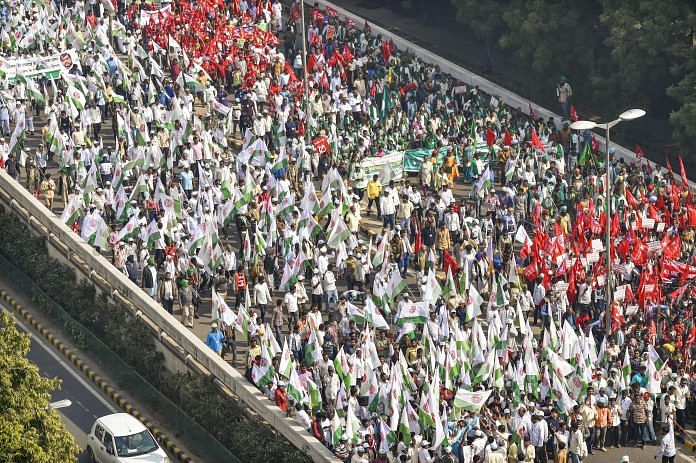Thousands of farmers’ are marching in New Delhi yet again. With the general election due next year, this could hurt Prime Minister Modi’s popularity.
New Delhi: Tens of thousands of farmers began marching toward parliament in India’s capital on Friday demanding debt waivers and remunerative prices for crops, underscoring challenges Prime Minister Narendra Modi faces before national elections next year.
More than 50,000 people representing about 200 farmer groups started marching toward India’s parliament from the main protest ground located a few kilometers away, said Avik Saha, a member of political party Swaraj Abhiyan. Some 1,800 police personnel have been deployed to maintain order during the procession that passes through the business district, police said.
Modi’s administration is trying to win over Indian farmers and douse their ire over the failure to fulfill his promise of 50 percent profit over the cost of production. As the country heads to polls, due in early 2019, the main opposition Congress party is moving to cash in on the disenchantment over unemployment and rising social tensions.
“The calculation of support price that the government fixes is erratic and erroneous,” said Darshan Pal, a rice and wheat farmer from the northern state of Punjab, who is participating in the protest. “The government should include actual rent of land, interest on capital invested and skilled labor rate while calculating the cost of cultivation of various crops.”

The farmers are demanding a special session of parliament to discuss crop support prices, a nationwide waiver of farm loans amid rising fertilizer costs and other agricultural inputs. The government’s procurement agencies, which are mandated to purchase agricultural produce at guaranteed rates, buy only a small portion of total output, leaving millions of farmers across the country at the mercy of middlemen.
Election Pledge
Keeping a key election promise made in 2014, Modi earlier this year approved a 50 percent return over the cost of production. Still, prices of crops including rice, pulses and oilseeds in some wholesale markets are below the government-set rates. Lower prices, combined with inadequate government purchases, have triggered the protests.
About 800 million people of India’s 1.3 billion depend directly or indirectly on farming, with agriculture accounting for about 16 percent of the economy. The country is the world’s top grower of cotton and the second-biggest producer of wheat, rice and sugar.
Some farmers traveled for more than 2,000 kilometers from different parts of the country to reach New Delhi to participate in the two-day protest, according to Raju Shetty, a member of parliament from Maharashtra state, who is participating in the protest.
Indian farmers fetched about 360 billion rupees ($5.2 billion) less last crop season due to lower market prices of commodities, including rice, corn, cotton, soybean and some pulses, than what they would have received by selling at government-set minimum purchase prices, Saha of Swaraj Abhiyan said.
“We want Modi to waive our loans because banks are attaching farmers’ properties,” said Kumar Ramaswamy, 49, a farmer from the southern state of Tamil Nadu. “We should be paid a fair price for our produce.” – Bloomberg






